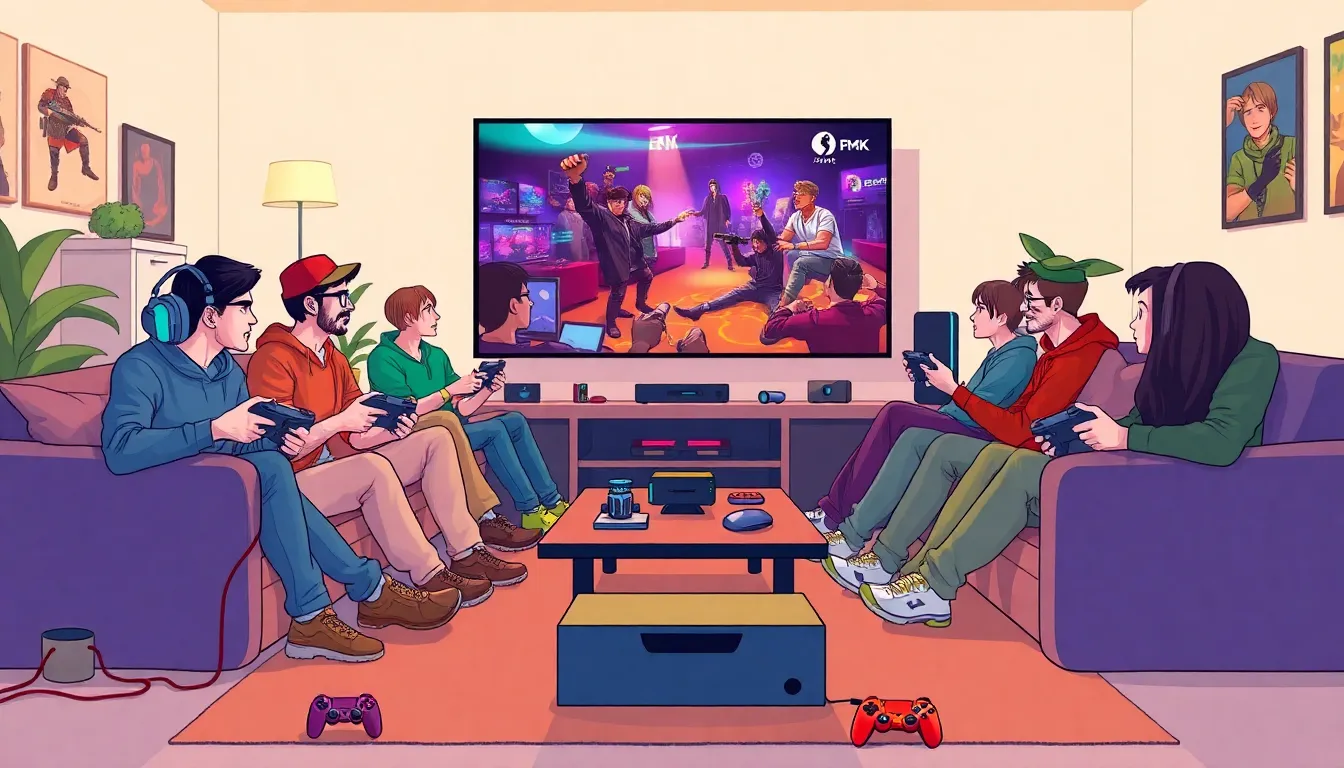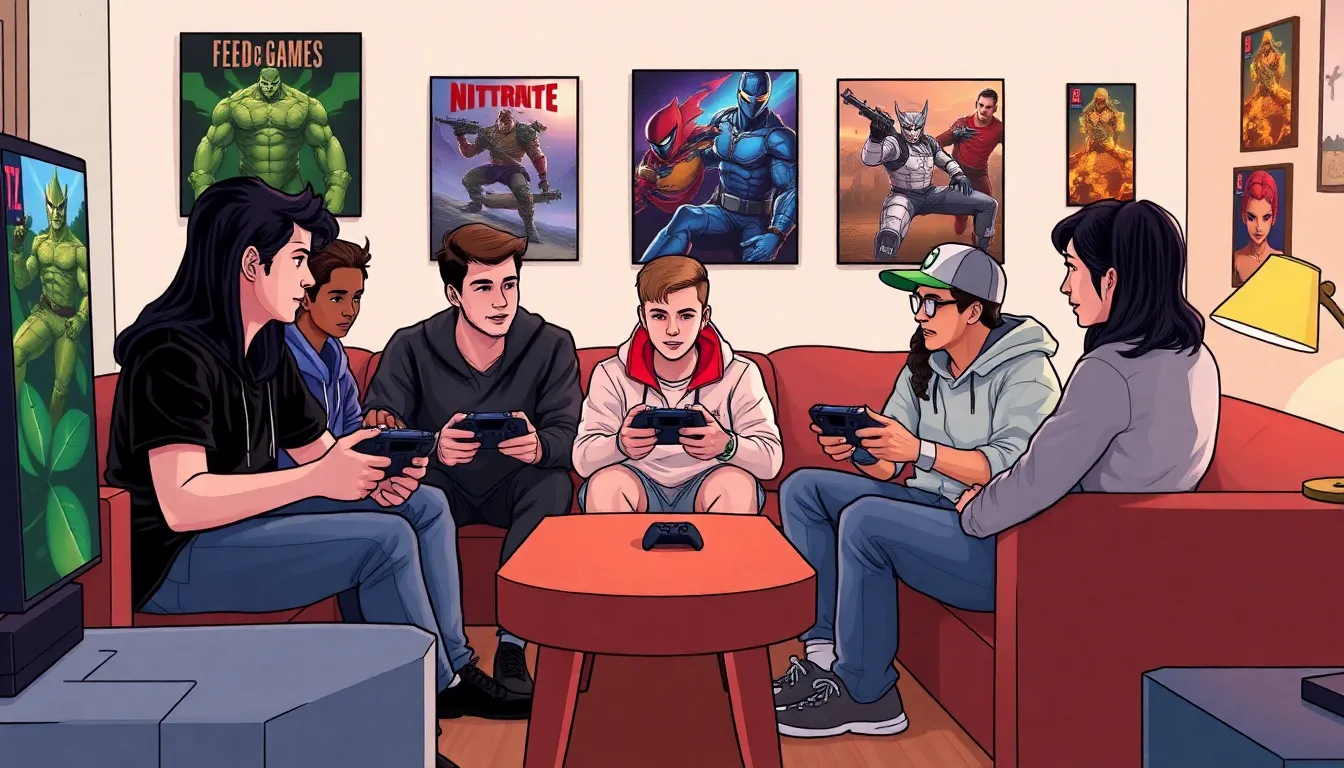In a world where every gamer thinks they can be the next big critic, it takes a discerning eye to separate the pixelated wheat from the chaff. Critical game reviews aren’t just about pointing out glitches or praising graphics; they dive deep into gameplay mechanics, storytelling, and that elusive “fun factor.” Think of them as the wise sages of the gaming realm, guiding players through the labyrinth of options available in today’s vast gaming landscape.
Table of Contents
ToggleOverview of Critical Game Reviews
Critical game reviews serve as essential tools for gamers seeking specific insights into new titles. These evaluations assess various aspects, including gameplay mechanics, narrative depth, and user experience. Reviewers analyze how well a game performs in delivering its intended experience, providing valuable context in a crowded marketplace.
Their assessments often incorporate quantitative scores alongside qualitative analysis, allowing readers to grasp a game’s strengths and weaknesses quickly. A review might highlight exceptional mechanics that enhance player engagement or critique aspects that limit enjoyment. Critics often explore the thematic elements and narrative structures that shape a game’s identity.
These reviews frequently discuss the innovation present in gameplay designs or critique the repetition of established formulas. Diverse perspectives across multiple reviews can create a more rounded understanding of a game’s impact. Community ratings and professional critiques combine to influence potential players’ purchasing decisions significantly.
Key elements to consider in critical game reviews include the balance between art and technology. The intricate interplay between graphics, sound design, and overall atmosphere can elevate a game from ordinary to extraordinary. Developers receive valuable feedback through these critiques, guiding future game design and enhancements.
Critical game reviews ultimately function as bridges between developers and the gaming community. Through objective analysis and passionate discourse, they enrich the conversation surrounding gaming experiences, ensuring players make informed choices. Understanding the nuances of these evaluations helps players appreciate the evolving landscape of video games.
Importance of Critical Game Reviews



Critical game reviews play a vital role in shaping the gaming landscape. These assessments provide depth and insight, influencing both developers and players.
Impact on Game Development
Innovative feedback from critical game reviews fosters improvements in design. Game developers rely on constructive criticism to identify areas needing enhancement. They adjust gameplay mechanics based on reviewers’ observations, ensuring a better user experience. Positive highlights can motivate teams to push creative boundaries further. Metrics from reviews often guide developers toward successful features while addressing any shortcomings. This iterative process leads to more polished and engaging games.
Influence on Consumer Decisions
Critical game reviews significantly sway consumer choices before purchase. Gamers often turn to these evaluations for guidance amidst a plethora of titles. Highlighted strengths and weaknesses inform players about what to expect. Many consumers trust established reviewers, equating high scores with quality content. Consequently, a negative review can deter potential buyers, while a favorable one can boost sales dramatically. The informative nature of reviews ensures gamers make educated decisions within a crowded marketplace.
Elements of a Critical Game Review
Critical game reviews encompass several core elements that inform gamers about a title’s depth and quality. Each aspect contributes to the overall evaluation.
Story and Narrative
Narrative structure plays a crucial role in shaping a player’s experience. Depth in storytelling engages players and enhances immersion, while plot coherence ensures a smooth progression. Character development, including motivations and arcs, fosters emotional investment, making the journey more impactful. Critics analyze how well the narrative aligns with gameplay, assessing whether the story empowers or detracts from player involvement. A game’s themes can also resonate with audiences, offering broader reflections on society or personal experiences.
Gameplay Mechanics
Gameplay mechanics determine how players interact with the game world. Intuitive controls empower players to engage fully, while innovative mechanics can redefine genre conventions. Critics delve into the balance of challenge and accessibility, ensuring that all players find satisfaction, regardless of skill level. Game pacing influences the experience, as quick reflexes may be required during tense moments, while slower sections can enhance narrative appreciation. Reviewers assess how mechanics intertwine with narrative elements, evaluating whether they elevate or hinder storytelling.
Visuals and Sound Design
Visual presentation significantly impacts the gaming experience. Graphics quality, art style, and environmental detail create an immersive world that draws players in. Sound design complements visuals, with music and sound effects enhancing emotional responses and gameplay cues. Reviewers evaluate technical aspects like frame rates and resolution, noting how they contribute to overall performance. A cohesive audio-visual experience fosters deeper engagement, allowing players to lose themselves in the game. Critics often highlight unique artistic choices that distinguish a game, celebrating innovation in design and presentation.
Notable Examples of Critical Game Reviews
Critical game reviews often highlight standout titles that shifted the gaming landscape. For instance, The Legend of Zelda: Breath of the Wild received acclaim for its open-world design and innovative gameplay. Reviewers noted the freedom it offered players, praising the immersive exploration mechanics that encouraged creativity in problem-solving.
Another notable review focused on The Last of Us Part II, which received attention for its narrative depth and emotional resonance. Critics analyzed character arcs and themes, emphasizing how these elements contributed to a memorable player experience. It sparked discussions on storytelling in video games, showcasing the medium’s potential for profound narrative engagement.
In the realm of competitive gaming, Overwatch exemplifies a title with significant critical attention. Reviewers commended its diverse character roster and team-based gameplay. They outlined how these aspects fostered cooperative play, allowing players to develop unique strategies and enhance social interaction.
Cyberpunk 2077 became a controversial subject in reviews due to its launch issues. Critics pointed out technical glitches but also evaluated its world-building and storytelling potential. This contrast highlighted the importance of addressing both design ambitions and execution quality in critical assessments.
Moreover, Hades attracted favorable reviews for its innovative roguelike mechanics and engaging narrative. Each playthrough showcased the game’s depth, capturing players’ attention with evolving gameplay and character interactions. Critics emphasized the seamless integration of gameplay and story, providing insights into how these elements elevate the overall experience.
Such notable examples of critical game reviews help players navigate their choices, providing a clearer understanding of a game’s strengths and weaknesses. Each review contributes to an ongoing dialogue in the gaming community, transforming how players perceive and engage with new releases.







